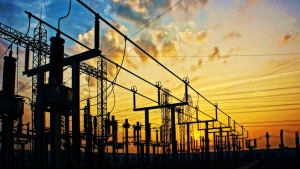3 Steps For A Smooth Transition To Digital Transformation

Written by Jeremy Friedmar
It’s time to shift from “big data” to “smart data.” Plants are no longer concerned about collecting information—most are knee-deep in it. Instead, they’re now questioning how to get more value from their data, whether it’s used to improve processes, reduce costs or optimize equipment efficiency.
But many manufacturers can’t extract valuable insights from their data because they’re still trying to figure out how to manage the sheer volume of information generated at every step in the production process, from production to quality control.
How can you move from overwhelm to action? By following these three steps for digital transformation.
Step 1: Develop a Solid Network Infrastructure
To support the transmission of data from point A to point B, you need to build a solid network infrastructure that can support increasing numbers of devices.
What characteristics make a network up to the challenge?
- High bandwidth. Bandwidth sets the limit for how much data can flow through the network. With the number of connected devices growing every day, the result is more traffic. An increase in traffic means that more bandwidth is required.
- Low latency. Managing latency is essential for processes that require determinism (consider robotic arms, for example). Low levels of latency help ensure that a specific action executes reliably and consistently, so you always know exactly when it will occur (in the case of a robotic arm, this means knowing when the arm will perform an expected movement).
- Security. To protect critical processes, networks must incorporate tools and best practices that prevent and detect cybersecurity issues, such as unauthorized access, tampering or disruption.
- Remote management. By providing remote access to the network, workers can monitor and control network activity and devices from anywhere to minimize downtime and optimize performance.
All these factors work together to improve uptime and keep mission-critical networks running. This minimizes disruption, maintains revenue and reduces waste.
Step 2: Make Sure Your Network Can Support Data Contextualization
Through sensors and automation systems, industrial environments are producing copious amounts of data. In order to do anything with this data, however, your network must be able to support the deployment of software that can process and contextualize it. This will help you quickly digest complex datasets to uncover patterns, establish benchmarks and predict future trends.
These resources can be deployed at the edge, in the cloud or both (a hybrid approach). How do you know which is right for you?
- Edge computing helps you maintain control over your data and reduces latency by decreasing the physical distance between data sources and destinations. Some companies also choose this option for security reasons (to eliminate internet connectivity).
- Cloud computing removes the burden of having to develop your own infrastructure for data storage and management. It also helps you easily access and manage data remotely.
- Hybrid offers a mix of both so your plant can reap the benefits of edge computing and cloud computing while using the most effective resource for each workload.
Step 3: Follow Established Best Practices
Following best practices can help you overcome the challenges you’ll confront along your digital transformation journey. Consider interoperability among automation products, for example: Guidance is available from organizations like the NAMUR User Association of Automation Technology in Process Industries.
The manufacturers and integrators you partner with can always step in to provide help in this area as well, sharing what they know and have learned through their years of hands-on work.
Make Digital Transformation Your Competitive Advantage
Belden is here to offer the right guidance and help you take the right steps so you reap the benefits of innovation as you embark on your digital transformation journey.
Manufacturers that are efficiently digitalized will have a clear competitive advantage: They’ll be able to use data to drive differentiators like predictive maintenance, operational visibility and faster troubleshooting and diagnosis.
Our Customer Innovation Center experts can help you design, develop and validate solid network solutions tailored to the complexity of your unique business needs so you can unleash the power of your OT data.
Find the original article here





